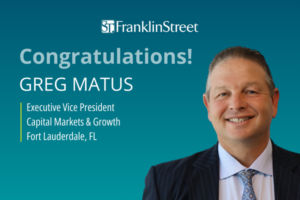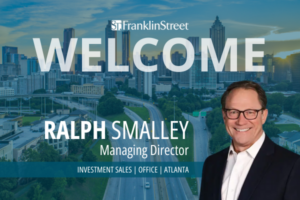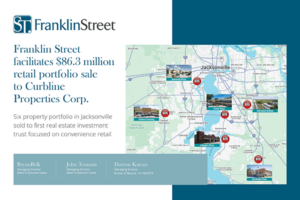Recently, there has been a dramatic increase in smaller power centers — between 150,000 and 180,000 square feet — being built in secondary markets throughout the Southeast. Many developers are aggressively pursuing smaller, second-tier markets with good density. The motivation factor for this expansion is the need by publicly traded retailers to secure future sales growth. There are also a number of secondary markets with relatively strong density that many retailers did not penetrate during the last development cycle.
The development playing field in core markets has gotten extremely competitive because REITs and institutional investors are, for the most part, solely looking at core and core-plus markets, and they have the resources to outbid other regional and one-off retail developers to secure those assets. In addition, multifamily developers have ratcheted up land costs in core markets, making it even more difficult for a majority of retail developers to compete.
TODAY’S POWER CENTERS
Through the last downturn we saw tremendous consolidation and disposition by several retailers across the country. At the height of power center development in the previous cycle, developers were fortunate to have two or three retailers within each category. With the loss of big box retailers such as Linens ‘N Things, Circuit City and Borders, and continuing consolidation in a number of categories, there are generally only one or two retailers remaining in each retail type. This has reigned in the size of big box developments to around 200,000 square feet.
Franklin Street recently created a power center report that concluded there are at least 10 power centers under development or recently completed in the Southeast, all of which are anchored by Hobby Lobby. These centers are located in smaller secondary markets and the tenant line up is similar at each center.
The current group of retailers who are actively being pursued by developers includes Hobby Lobby, Academy Sports + Outdoors, Marshalls, T.J. Maxx, Ross Dress for Less, PetSmart, Petco, and ULTA Beauty. Most of these soft goods retailers want to co-locate in stronger secondary markets. Developers look to Hobby Lobby and Academy Sports + Outdoors to be added to the mix to secure better coverage on the land, helping to increase their overall project return.
Developers are also gravitating to restaurant and entertainment tenants — we are now seeing as much as 50 percent of small shop space being committed to these types of retailers. Today’s consumers are seeking an experience, and developers are eager to draw more customers into their projects with restaurant/entertainment tenants. As well, developers can secure premium rents from restaurants and entertainment concepts, but with them come larger tenant allowances and potential parking concerns.
WHO ARE THE ACTIVE POWER CENTER DEVELOPERS?
Because of the increase in land cost and lack of available land for development in certain markets, some traditional big box developers are building smaller unanchored strip centers comprised mostly of national retailers. Developers continue to eye well-positioned real estate with good density and traffic counts. We are seeing a willingness by developers to increase their pricing for the best-positioned asset in a particular submarket.
Most developers in this space are building to sell, since they don’t want to risk being saddled with properties in secondary/ tertiary markets when the next downturn happens. A slowdown will impact the secondary markets first and developers are merchant building in these smaller markets with short term hold strategies.
INVESTMENT SALES
With the uncertainty around the stock market, investors are turning to real estate investments for yield. With REITs and other institutional investors wanting to stay in core and core-plus markets, there is a limited buyer pool for this secondary power center product. High net worth individuals and private companies are the primary buyers for this product type.
A lot of investors continue to look for value-add opportunities, but most of the centers falling into that category have already been redeveloped; it has become increasingly difficult to find a diamond in the rough.
LOOKING AHEAD
As long as retailers are required to deliver higher sales volumes, the development of additional secondary market power centers will continue. Over time, new retailers will surface to give developers an even larger tenant pool to draw from, but the days of 500,000-square-foot, retail-only power centers are a thing of the past.SCB
With more than 25 years of commercial real estate expertise throughout the U.S., John Tennant, senior director of Franklin Street, specializes in the sale of single-tenant and retail properties
View the original story here: https://shoppingcenterbusiness.epubxp.com/i/723243-sep-2016



